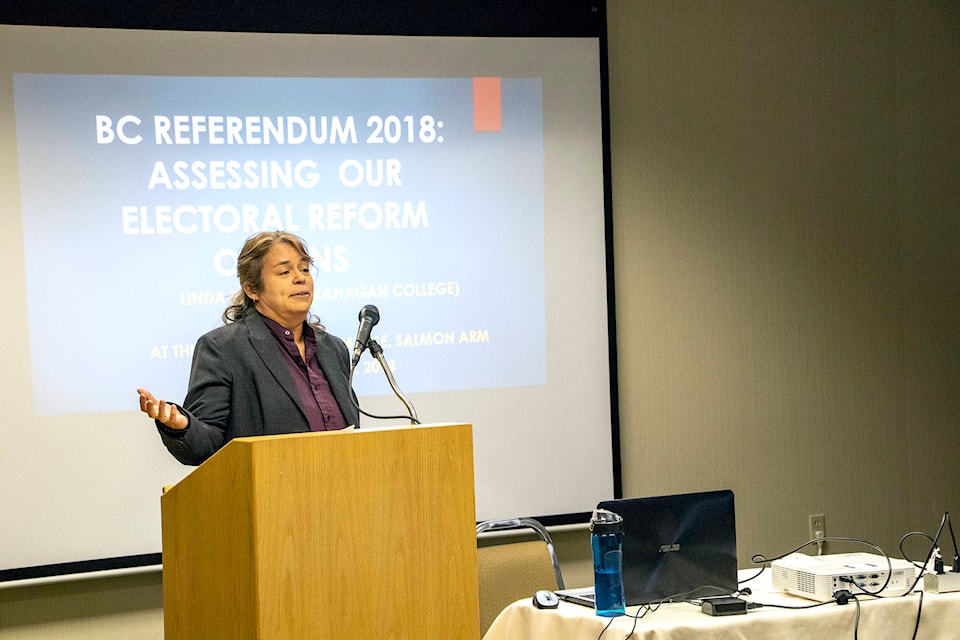British Columbia is about to take a step to decide what the future of voting will look like in the province, and voters will get their say in the matter come October.
In 2018, B.C. is holding a referendum to decide which voting system should be used for provincial elections. Beginning Oct. 22, British Columbians will be asked to vote on the decision to adopt a proportional representation voting system or stand by the current way of voting.
On Thursday, Sept. 13 the Salmon Arm Chamber of Commerce hosted a presentation by Dr. Linda Elmose, a professor at Okanagan College, discussing the different types of proportional representation systems and comparing them to Canada’s current first-past-the-post system.
Related: Proportional representation means more B.C. parties and coalitions
To kick off the talk, Elmose insisted “learning is paramount, it is crucial to have events like these because there is not enough publicity on this information. The question that matters is do we want to keep the same system or change? If you can answer that question for yourself you are well on your way.”
At the forum three types of proportional representation were discussed: a dual-member system (each riding has local and regional MLAs), a mixed-member system (only 40 per cent of seats are chosen by proportional vote) and a rural-urban proportional system (rural ridings use mixed-member, urban ridings use single transferable votes).
The key difference between a proportional representation system and the current first-past-the-post system is in how seats are allocated based on vote results. In the current system, the candidate with the largest share of the votes simply wins control of the seat in their riding, regardless if they win by one per cent or by a landslide vote. In a proportional representation system seats are granted based on the per cent of votes, meaning a party with 40 per cent of the votes receives 40 per cent of the seats, and so on.
As Elmose pointed out, each of these systems have positives and negatives and it’s important for British Columbians to consider what is important to them ahead of the referendum vote.
For the current system, Elmose said it is “easy to understand, there is transparency to how it works and it allows for effective local representation.” On the downside, however, she said it “often creates false majority governments and voters sometimes feel their vote is wasted when their party loses.”
She also noted that the current system can create “safe seats” in areas that heavily lean to one side or another, meaning candidates assume they will win based on past results and therefore put less effort into their campaign.
Related: Former B.C. premier warns against change to proportional representation
On the topic of proportional representation, Elmose said some positives include the feeling votes always count and a potential for increasing cooperation between parties who may end up sharing power. However, she said a proportional representation system is “more complex, and there are still uncertainties as to where boundaries will be set and how many MLAs will represent each area.”
In any proportional system, riding boundaries may need to be adjusted to include more than one MLA per area. This was a point of contention during the discussion as fears of losing local representation arose. While the current system elects a single MLA with clear ties to their riding, some worried that expanded boundaries would simply move their representative further away.
However, in any of the proposed systems it is important to note that local representation would remain roughly the same while regional MLAs, selected from local candidates, would be added based on vote percentages.
Beginning Oct. 22 British Columbians can make their voice heard on this matter by voting in the referendum on electoral reform. For more information visit www.elections.bc.ca/referendum.
@Jodi_Brak117
jodi.brak@saobserver.net
Like us on Facebook and follow us on Twitter.
